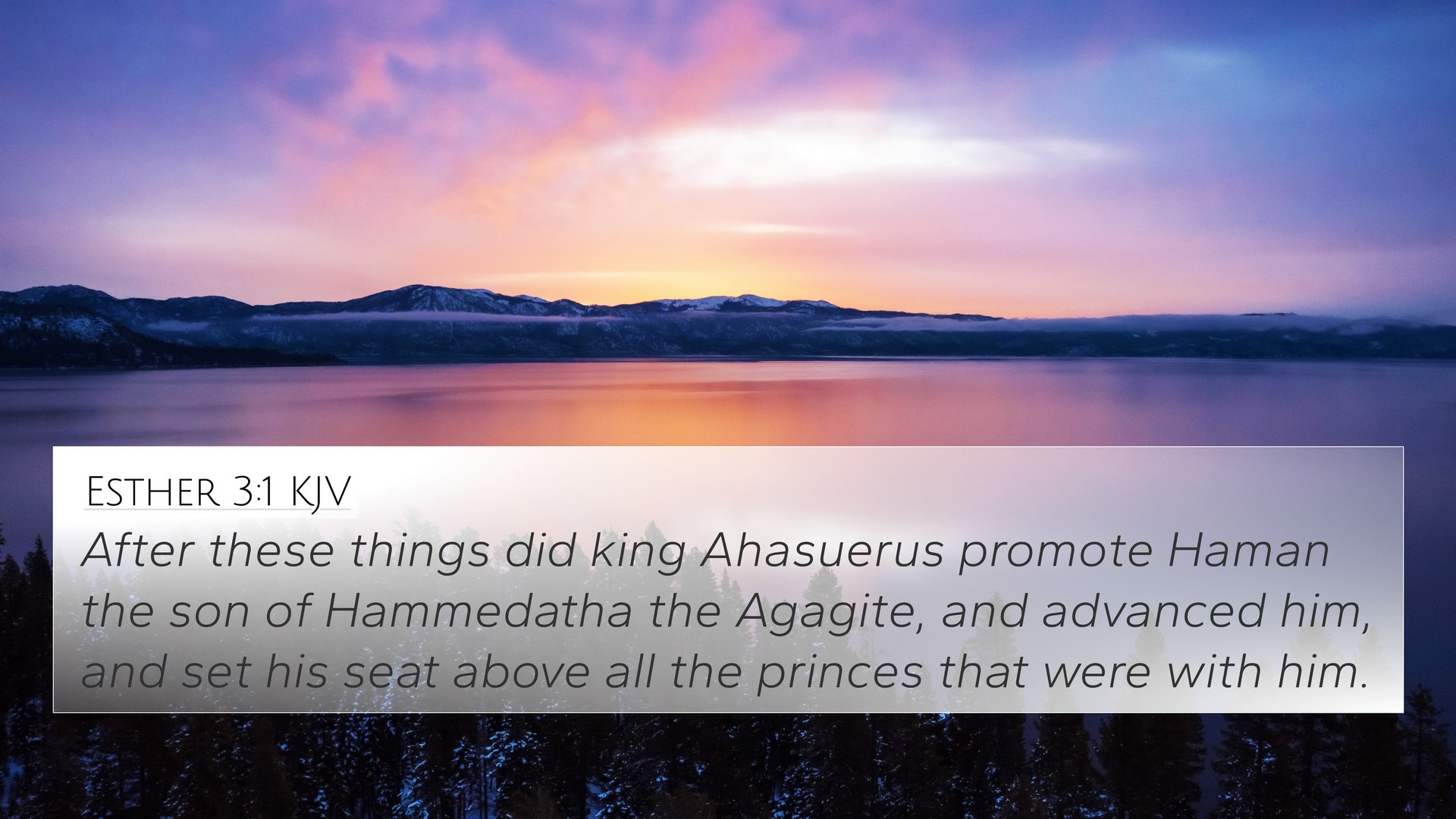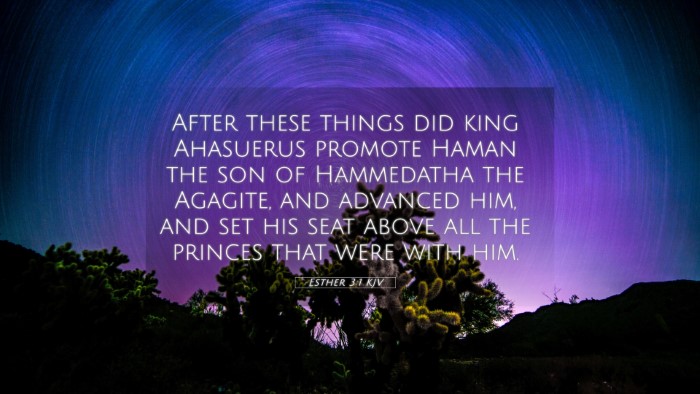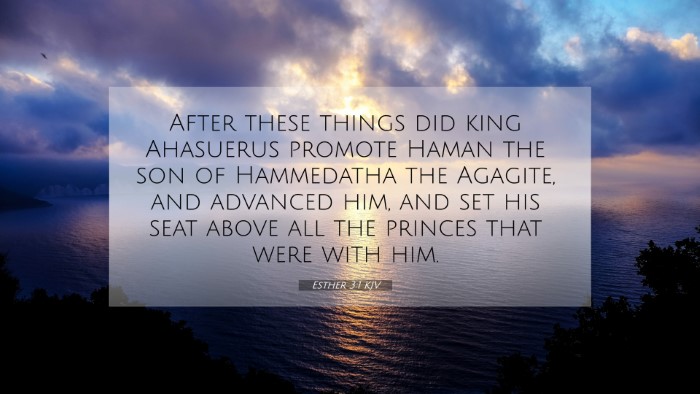Old Testament
Genesis Exodus Leviticus Numbers Deuteronomy Joshua Judges Ruth 1 Samuel 2 Samuel 1 Kings 2 Kings 1 Chronicles 2 Chronicles Ezra Nehemiah Esther Job Psalms Proverbs Ecclesiastes Song of Solomon Isaiah Jeremiah Lamentations Ezekiel Daniel Hosea Joel Amos Obadiah Jonah Micah Nahum Habakkuk Zephaniah Haggai Zechariah MalachiEsther 3:1 Similar Verses
Esther 3:1 Cross References
After these things did king Ahasuerus promote Haman the son of Hammedatha the Agagite, and advanced him, and set his seat above all the princes that were with him.
Uncover the Rich Themes and Topics of This Bible Verse
Listed below are the Bible themes associated with Esther 3:1. We invite you to explore each theme to gain deeper insights into the Scriptures.
Esther 3:1 Cross Reference Verses
This section features a detailed cross-reference designed to enrich your understanding of the Scriptures. Below, you will find carefully selected verses that echo the themes and teachings related to Esther 3:1 KJV. Click on any image to explore detailed analyses of related Bible verses and uncover deeper theological insights.
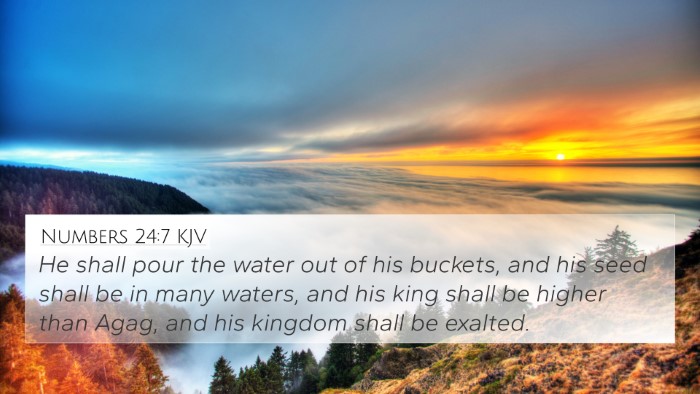
Numbers 24:7 (KJV) »
He shall pour the water out of his buckets, and his seed shall be in many waters, and his king shall be higher than Agag, and his kingdom shall be exalted.
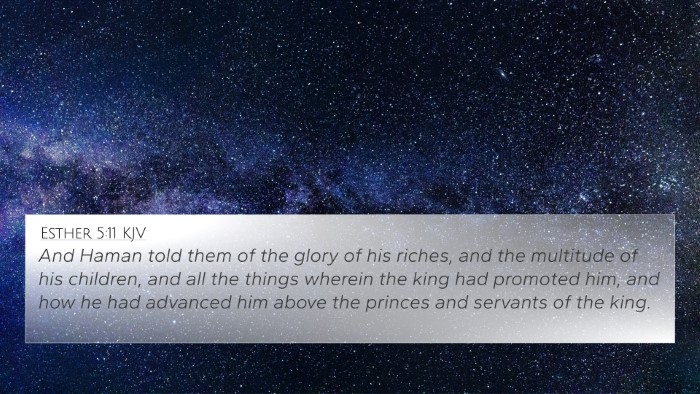
Esther 5:11 (KJV) »
And Haman told them of the glory of his riches, and the multitude of his children, and all the things wherein the king had promoted him, and how he had advanced him above the princes and servants of the king.

Daniel 6:2 (KJV) »
And over these three presidents; of whom Daniel was first: that the princes might give accounts unto them, and the king should have no damage.
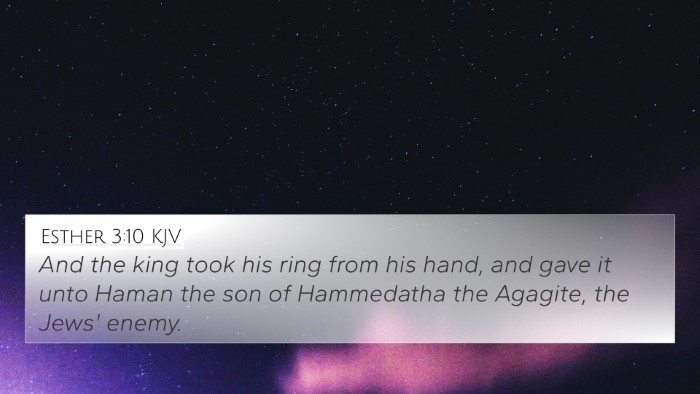
Esther 3:10 (KJV) »
And the king took his ring from his hand, and gave it unto Haman the son of Hammedatha the Agagite, the Jews' enemy.
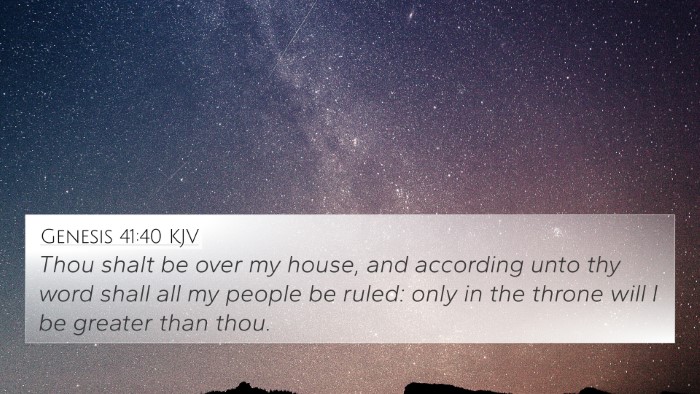
Genesis 41:40 (KJV) »
Thou shalt be over my house, and according unto thy word shall all my people be ruled: only in the throne will I be greater than thou.
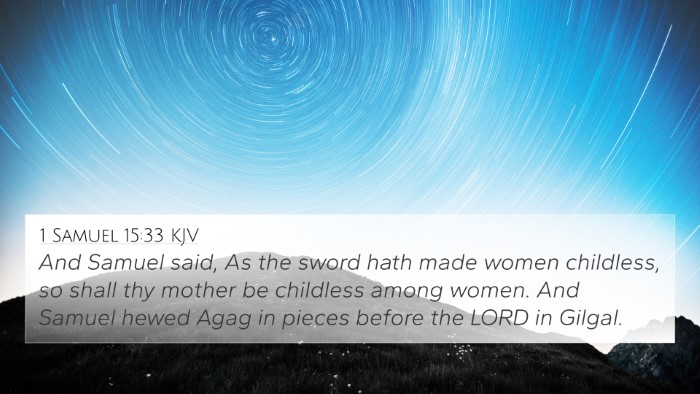
1 Samuel 15:33 (KJV) »
And Samuel said, As the sword hath made women childless, so shall thy mother be childless among women. And Samuel hewed Agag in pieces before the LORD in Gilgal.
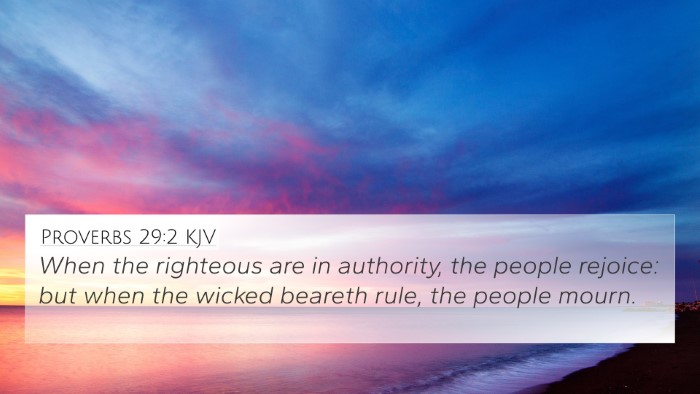
Proverbs 29:2 (KJV) »
When the righteous are in authority, the people rejoice: but when the wicked beareth rule, the people mourn.
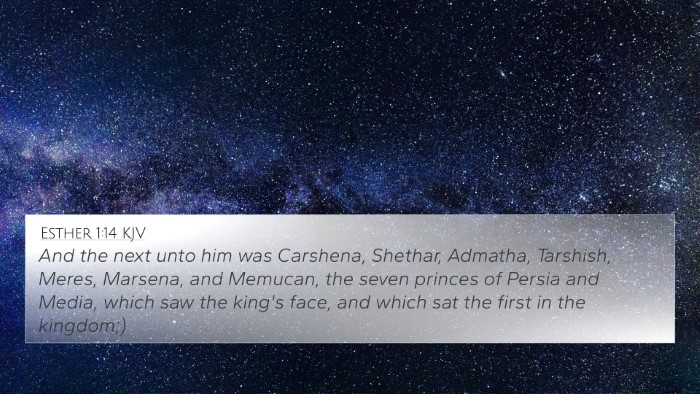
Esther 1:14 (KJV) »
And the next unto him was Carshena, Shethar, Admatha, Tarshish, Meres, Marsena, and Memucan, the seven princes of Persia and Media, which saw the king's face, and which sat the first in the kingdom;)
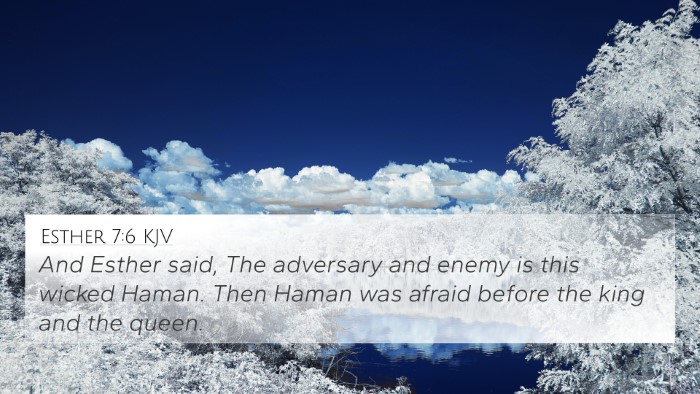
Esther 7:6 (KJV) »
And Esther said, The adversary and enemy is this wicked Haman. Then Haman was afraid before the king and the queen.
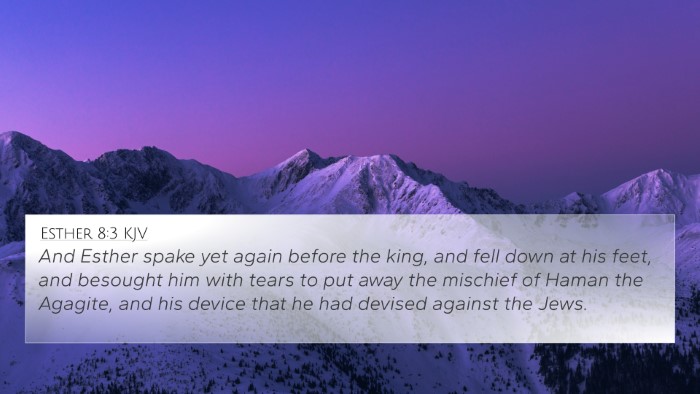
Esther 8:3 (KJV) »
And Esther spake yet again before the king, and fell down at his feet, and besought him with tears to put away the mischief of Haman the Agagite, and his device that he had devised against the Jews.
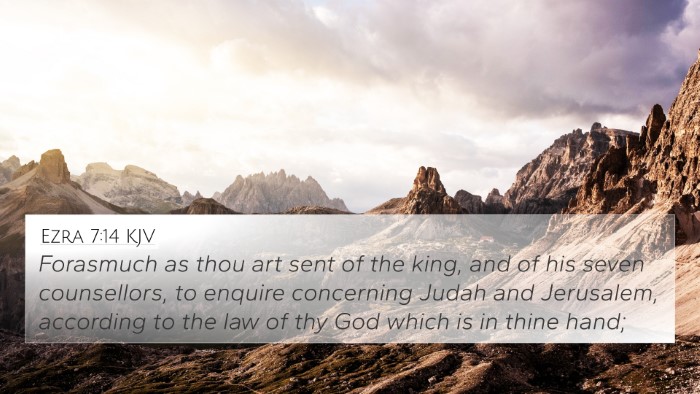
Ezra 7:14 (KJV) »
Forasmuch as thou art sent of the king, and of his seven counsellors, to enquire concerning Judah and Jerusalem, according to the law of thy God which is in thine hand;
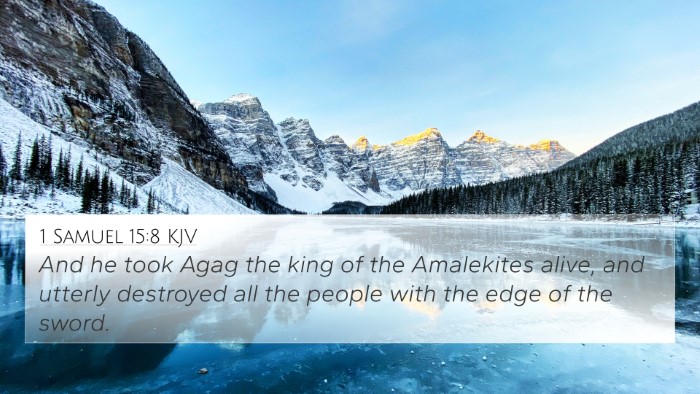
1 Samuel 15:8 (KJV) »
And he took Agag the king of the Amalekites alive, and utterly destroyed all the people with the edge of the sword.
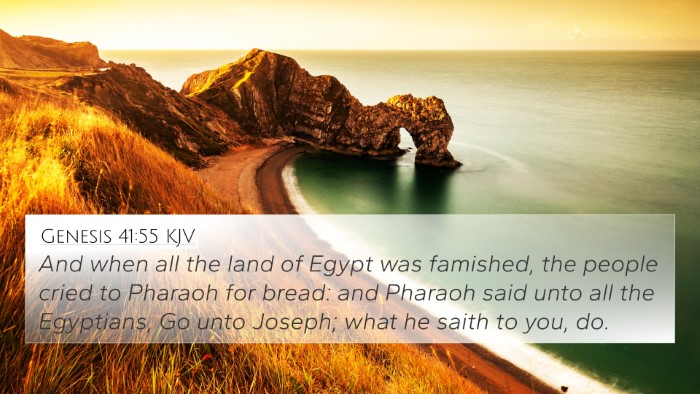
Genesis 41:55 (KJV) »
And when all the land of Egypt was famished, the people cried to Pharaoh for bread: and Pharaoh said unto all the Egyptians, Go unto Joseph; what he saith to you, do.
Esther 3:1 Verse Analysis and Similar Verses
Understanding Esther 3:1
Esther 3:1: "After these things did king Ahasuerus promote Haman the son of Hammedatha the Agagite, and advanced him, and set his seat above all the princes that were with him."
The verse introduces Haman, a critical character in the Book of Esther, whose rise to power sets the stage for the central conflict in the narrative. His promotion by King Ahasuerus is significant in understanding the overarching themes of pride, envy, and the challenges faced by the Jewish people in exile.
Insights from Public Domain Commentaries
Matthew Henry's Commentary
Henry notes the divine providence at play in this promotion, suggesting that it serves to fulfill God's purpose for His people. The elevation of Haman not only reflects the transient nature of worldly power but also positions him as an antagonist against the Jews, particularly Mordecai. This verse emphasizes the theme of God’s control over earthly kingdoms, as those in power often serve His ultimate plan, even when their intentions are malevolent.
Albert Barnes' Notes on the Bible
Barnes highlights the significance of Haman’s lineage, indicating that as an Agagite, he is a descendant of the Amalekites, historically enemies of Israel. This connection underscores the thematic battle between Israel and its adversaries. The verse illustrates how the past enmities manifest in the present, reinforcing the moral and historical continuities in scripture, and encouraging readers to consider the implications of Haman’s position on the Jewish community.
Adam Clarke's Commentary
According to Clarke, Ahasuerus's decision to promote Haman exemplifies their political dynamics and the court's intrigue. Haman’s rapid ascendance reflects the volatile nature of royal favor and serves as a warning about susceptibility to pride and jealousy. Clarke’s analysis pushes readers to reflect on the moral implications of such treachery and to recognize the pivotal role that character plays in the unfolding drama of Esther.
Lessons and Themes
- Divine Providence: The promotion of Haman reflects God's sovereignty even when evil seems to prevail.
- Historical Context: Haman as an Agagite connects to the long-standing conflict between Israel and the Amalekites.
- Political Intrigue: The dynamics within the court showcase the fickle nature of power and loyalty.
- Moral Lessons: The narrative serves as a reminder to remain faithful and humble, even in the face of adversaries.
Bible Verse Cross-References
Esther 3:1 connects with several other scripture passages that enhance understanding and provide deeper insights into the narrative:
- Exodus 17:14-16: God's command regarding the Amalekites.
- 1 Samuel 15:1-9: The fall of King Saul and his failure to destroy the Amalekites.
- Psalm 37:1-2: A reminder not to fret over evildoers.
- Proverbs 16:18: “Pride goes before destruction, and a haughty spirit before a fall.”
- Matthew 5:10-12: The righteous will be blessed despite persecution.
- Romans 8:28: All things work together for good for those who love God.
- Isaiah 54:17: No weapon formed against you shall prosper.
Thematic Connections and Application
This verse and its surrounding context showcase intricate connections across various Biblical themes. Here are a few thematic Bible verse connections:
- The Role of Providence: How God orchestrates events for His purposes, seen in the plight of the Jews.
- Identity and Conflict: Recognizing the ongoing spiritual battles faced by God's people, reminiscent of the New Testament's discussions on spiritual warfare.
- Moral Integrity: The call to live righteously amid adversity, related to the teachings of Jesus in the Gospels.
Conclusion
Esther 3:1 serves as a pivotal point in understanding the larger narrative of the book. Through the characters of Haman and Ahasuerus, it signals the struggle between good and evil within the context of divine providence. By exploring cross-references, connections between Biblical texts, and the unfolding themes, one gains a richer insight not only into this verse but into God's overarching narrative throughout scripture.
